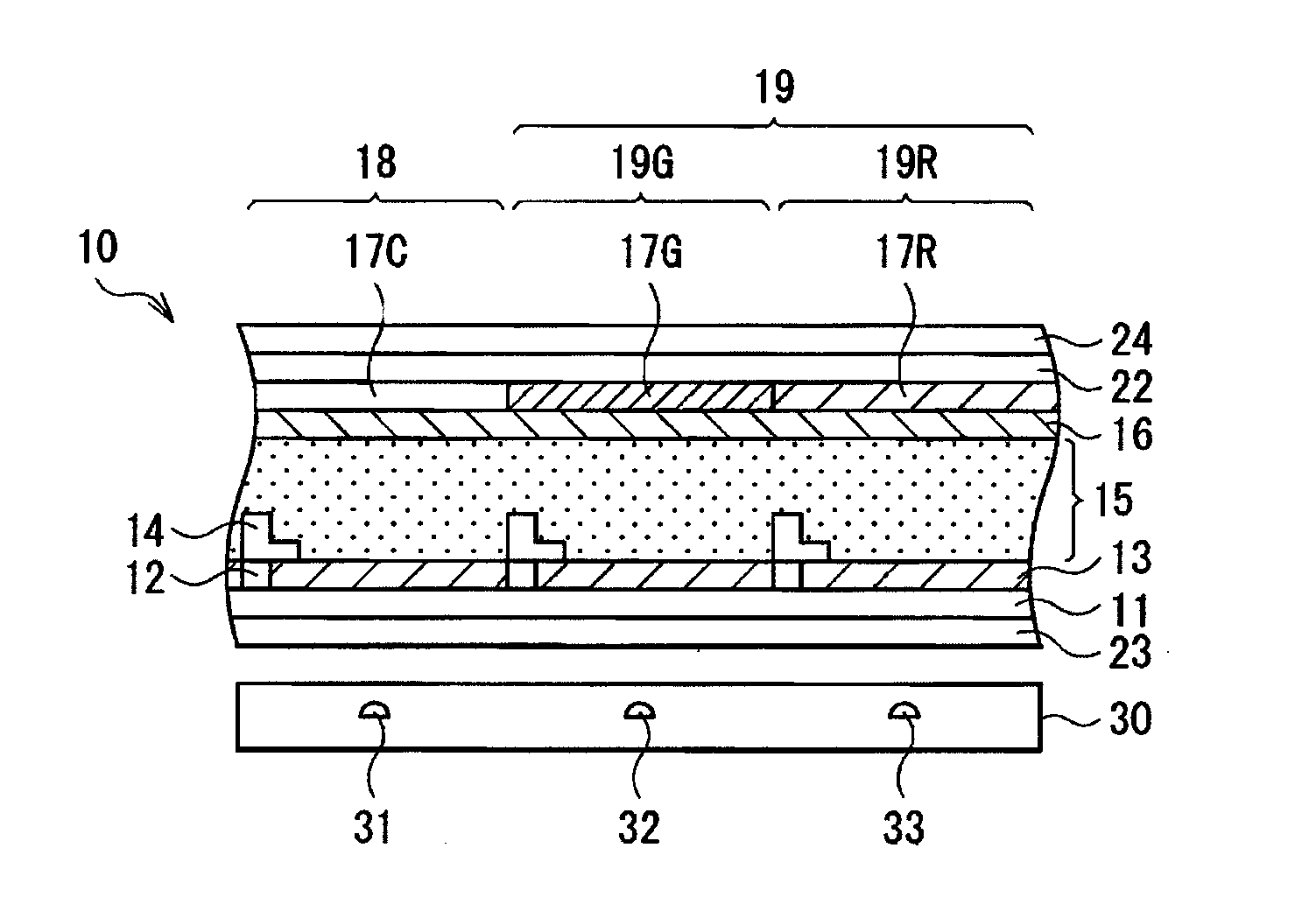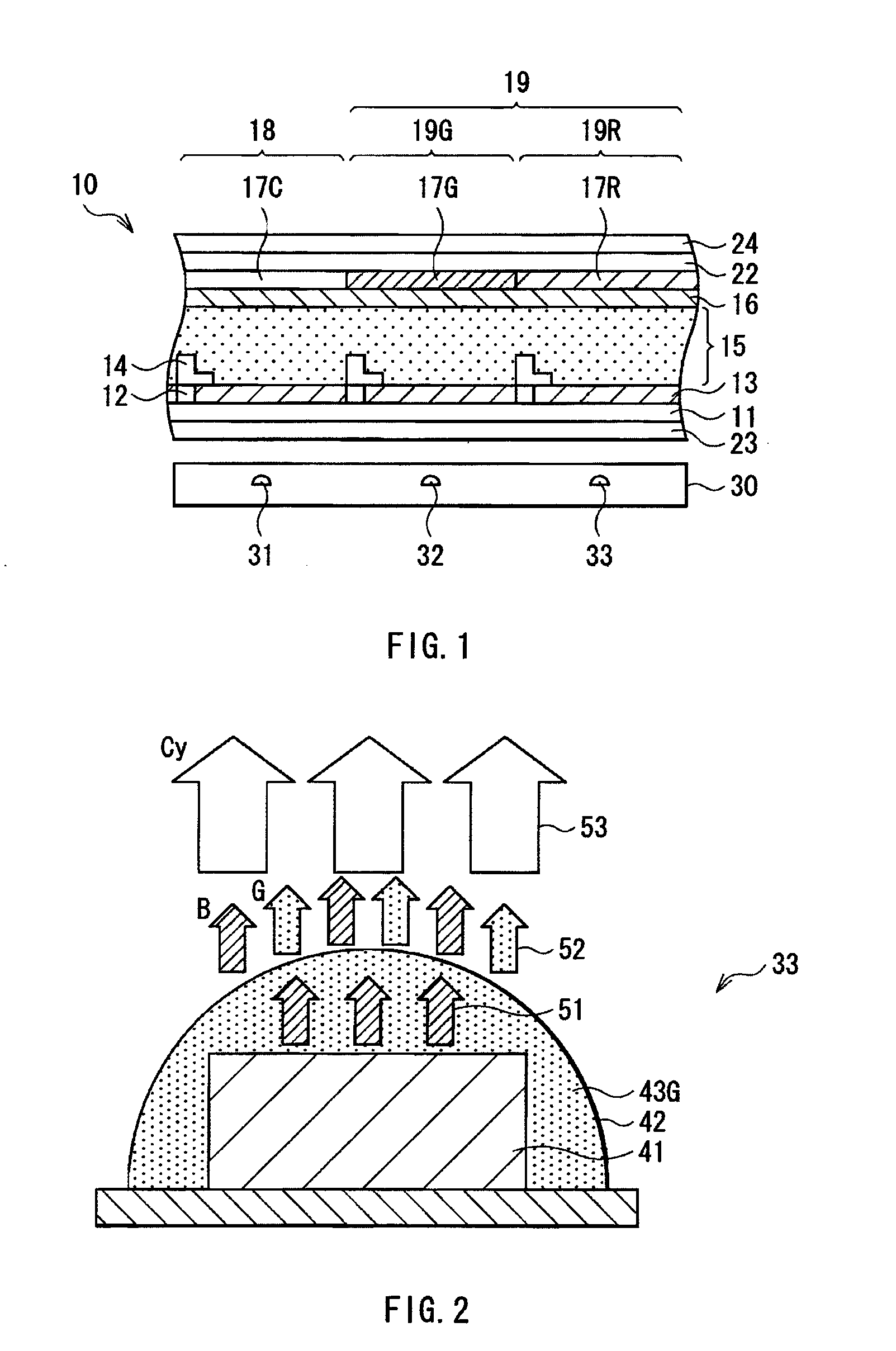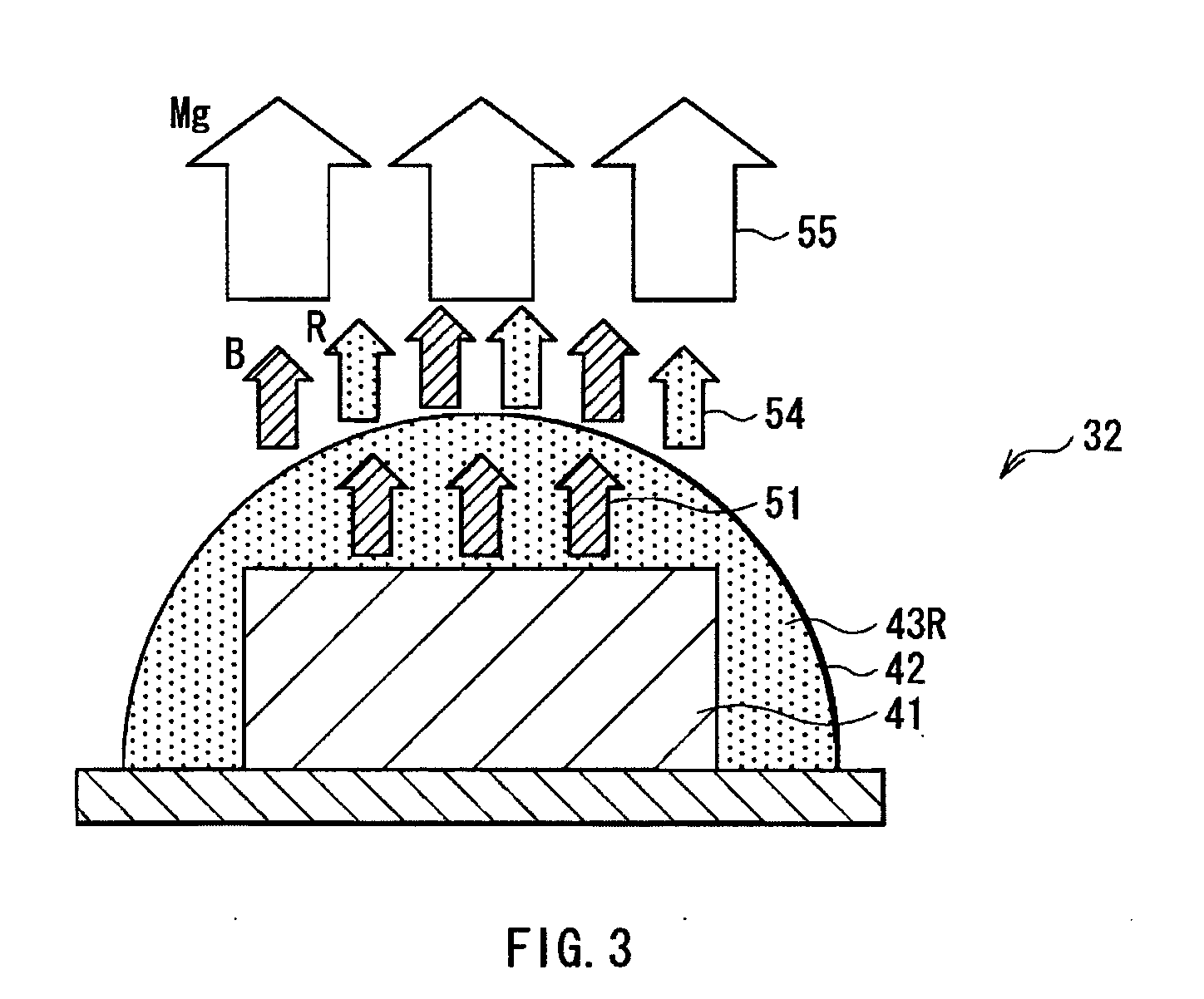Color display unit
a color display unit and color technology, applied in the field of color display units, can solve the problems of low luminous efficiency of ultraviolet-excited leds, hardly satisfied response performance requirements for tv use, and all red phosphors at present have long afterglow time, etc., to achieve the effect of improving visibility and obtaining certain brightness quickly
- Summary
- Abstract
- Description
- Claims
- Application Information
AI Technical Summary
Benefits of technology
Problems solved by technology
Method used
Image
Examples
first embodiment
[Basic Configuration of Color Display Unit]
[0049]FIG. 1 shows a basic configuration example of a color display unit according to a first embodiment of the invention. The color display unit has a display panel 10, and a backlight 30 opposed to the display panel 10 on a back side of the display panel 10. The backlight 30 has three kinds of LEDs, i.e., blue LED 31, magenta LED 32, and cyan LED 33, each LED being able to be independently controlled in light emission. The blue LED 31 is a semiconductor light emitting element including a GaN (gallium nitride) based semiconductor material or the like.
[0050]In the embodiment, the display panel 10 corresponds to a specific example of the display section according to the invention. The backlight 30 corresponds to a specific example of the light source section according to the invention.
[0051]The display panel 10 performs desired color display by controlling the transmissivity of the light irradiated from the backlight 30. The display panel 10...
second embodiment
[0082]Next, a color display unit according to a second embodiment of the invention is described. Substantially the same components as in the color display unit according to the first embodiment are marked with the same reference numerals or signs, and description of them is appropriately omitted.
[Basic Configuration of Color Display Unit]
[0083]FIG. 6 shows a configuration example of the color display unit according to the present embodiment. In this color display unit, the partially transmittable region 19 (the red transmittable region 19R and the green transmittable region 19G) of the color display unit shown in FIG. 1 is replaced by a yellow transmittable region 19Y. In addition, a yellow color filter 17Y is provided in place of the red filter 17R and the green filter 17G. The yellow filter 17Y is transparent to yellow light, namely, transparent to red light and green light, and opaque to blue light. The yellow filter 17Y is provided in correspondence to the yellow transmittable r...
third embodiment
Modification of Third Embodiment
[0104]While FIG. 16 shows a configuration where red and green, two kinds of color transmittable regions (the red transmittable region 19R and the green transmittable region 19G) are provided as the partially transmittable region 19, and a portion corresponding to the previous blue transmittable region is made transparent to be the full-color transmittable region 18, a portion to be made transparent may not be the portion corresponding to the blue region.
[0105]FIG. 20 shows a display device different from the display device having the previous structure as shown in FIG. 10, in that it has a display panel 10B using a transparent filter 17C in place of the green filter 17G. The transparent filter 17C is used, thereby a portion corresponding to the green transmittable region 19G is made transparent to be the full-color transmittable region 18. The display device has red and blue, two kinds of color transmittable regions (the red transmittable region 19R a...
PUM
 Login to View More
Login to View More Abstract
Description
Claims
Application Information
 Login to View More
Login to View More - R&D
- Intellectual Property
- Life Sciences
- Materials
- Tech Scout
- Unparalleled Data Quality
- Higher Quality Content
- 60% Fewer Hallucinations
Browse by: Latest US Patents, China's latest patents, Technical Efficacy Thesaurus, Application Domain, Technology Topic, Popular Technical Reports.
© 2025 PatSnap. All rights reserved.Legal|Privacy policy|Modern Slavery Act Transparency Statement|Sitemap|About US| Contact US: help@patsnap.com



